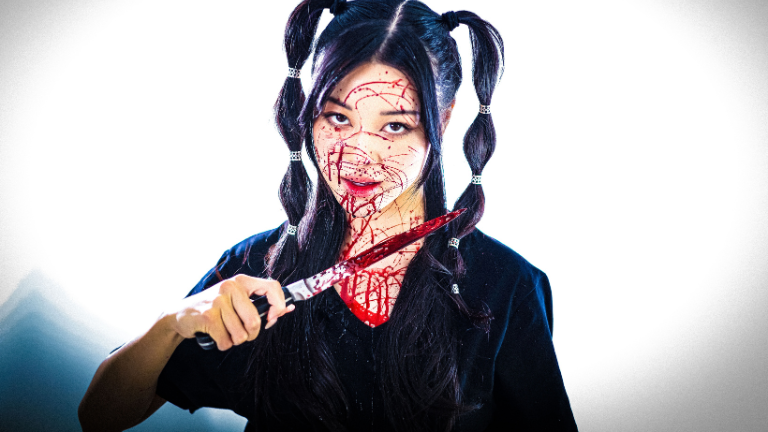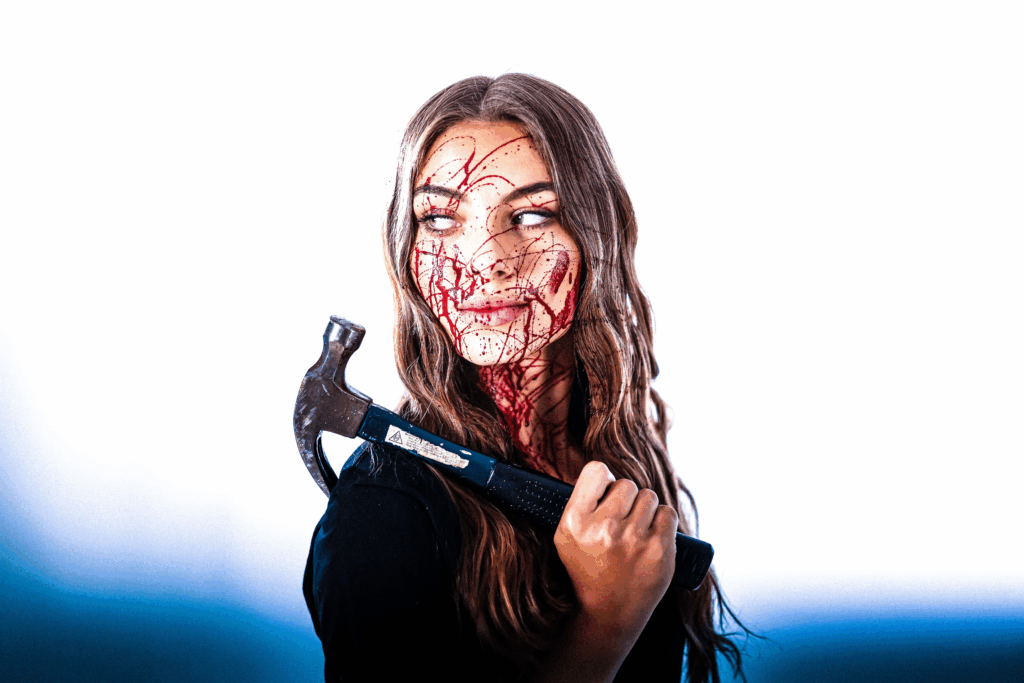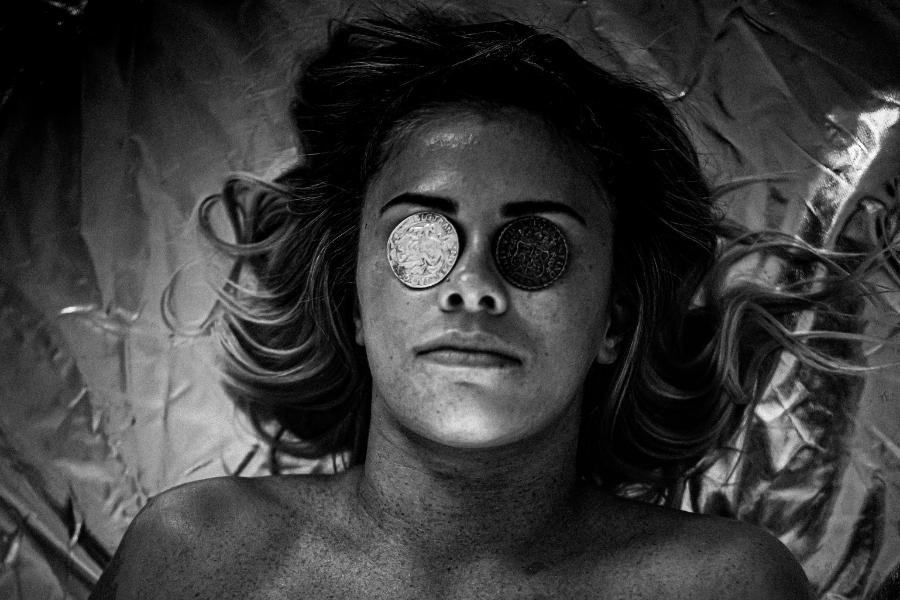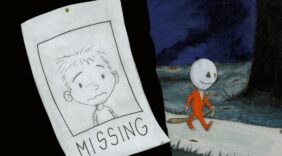
Why You Always Watch Scary Movies in Theatres: Horror Hits Hard in Public
Written by on Jul 09, 2025 2:59 PM
There’s something undeniably electric about watching scary movies in theatres that no home viewing experience can replicate. The collective gasps, the shared jumps, the nervous laughter that ripples through a darkened auditorium – these moments create a unique horror experience that transforms individual fear into communal catharsis. While streaming services have made it easier than ever to watch films from the comfort of our couches, horror movies in theatres continue to draw massive crowds who understand that some films are simply meant to be experienced with others.
The theatre environment amplifies every element that makes horror effective: the booming surround sound that makes your chest vibrate with each thunderclap, the massive screen that engulfs your peripheral vision, and most importantly, the energy of fellow moviegoers who are all surrendering to the same emotional rollercoaster. When you’re searching for scary movies out now, you’re not just looking for entertainment – you’re seeking an experience that can only be fully realized in the communal space of a movie theatre.
This phenomenon isn’t just about preference; it’s rooted in psychology, technology, and the fundamental human need for shared experiences. From the latest supernatural thrillers to psychological horror masterpieces, seeing scary movies out in theatres continues to prove that some stories are most powerful when experienced on the big screen. Let’s explore why horror hits harder in public and why the theatre remains the ultimate destination for fear-seekers.
The human brain is wired to respond differently to fear when we’re in groups versus when we’re alone. This neurological quirk explains why seeing horror movies in theatres generate such intense reactions compared to home viewing. When we’re surrounded by others experiencing the same stimuli, our mirror neurons activate, amplifying our own emotional responses through a process called emotional contagion.
Dr. Sarah Chen, a behavioral psychologist specializing in media consumption, explains that “the theatre environment creates a feedback loop of fear responses. When one person jumps, others are primed to react more strongly to the next scare. This cascading effect makes the entire experience more intense for everyone involved.” This is why a jump scare that might make you flinch at home can make an entire theatre audience scream in unison.
Paradoxically, being vulnerable in a group setting makes us feel safer about experiencing fear. When you’re watching scary movies in theatres, you’re not alone in your terror. The presence of others creates a psychological safety net – you know that if something truly threatening were to happen, you wouldn’t face it alone. This allows moviegoers to lean into the fear experience more completely than they would in isolation.

At home, you might suppress your reactions to avoid seeming dramatic, but in a theatre full of people who are all there for the same reason, screaming becomes acceptable, even expected. This social contract allows for a more authentic and uninhibited response to horror content.
Horror films in theatres create what psychologists call “collective catharsis” – a shared emotional release that bonds the audience together. When the credits roll and the lights come up, there’s often a palpable sense of relief and camaraderie among viewers. You’ve all survived the same ordeal together, creating an instant connection with strangers who just moments before were fellow passengers on an intense emotional journey.
Also, media platforms are filled with posts about people’s reactions to the latest scary movies out now, creating extended communities of horror fans who bond over their shared experiences. The theatre viewing becomes the foundation for these ongoing conversations and connections.
Josh Stolberg’s Skillhouse (2025) – a terrifying horror movie about social media influencers – amplifies this collective catharsis making it a must see theatrical experience for horror fans nationwide. The film will be in theatres nationwide starting July 11.
While home theatre systems have improved dramatically, commercial theatres still maintain significant technical advantages that make horror movies in theatres more impactful. The scale and sophistication of theatre audio-visual systems create an immersive environment that simply cannot be replicated in most home settings.
Horror relies heavily on sound design to create atmosphere and deliver scares. Theatre sound systems, with their powerful subwoofers and precise speaker placement, can create audio experiences that physically affect your body. The low-frequency effects (LFE) channel in theatre systems can produce sounds below the threshold of conscious hearing – subsonic frequencies that create feelings of unease and dread without the audience even realizing why they’re feeling anxious.
When you’re watching scary movies in theatres, you’re not just hearing the soundtrack; you’re feeling it. The rumble of an approaching monster, the sharp crack of breaking glass, the subtle whisper that seems to come from directly behind you – these audio elements are precisely calibrated for theatre environments and lose much of their impact when compressed for home viewing.
The sheer size of theatre screens creates a level of visual immersion that’s crucial for horror effectiveness. When a monster fills a 40-foot screen, it dominates your entire field of vision, making it impossible to look away or mentally distance yourself from the threat. This forced focus intensifies the fear response in ways that smaller screens simply cannot achieve.
Modern theatre projection systems also maintain color accuracy and contrast levels that enhance the visual storytelling of horror films. The deep blacks and bright highlights that horror cinematographers use to create mood and tension are best experienced in the controlled lighting environment of a theatre, where external light sources don’t wash out the carefully crafted visuals.

Attending scary movies in theatres has evolved into a social ritual that extends far beyond the film itself. The entire experience – from purchasing tickets to discussing the film afterward – creates a shared cultural moment that strengthens social bonds and creates lasting memories.
Choosing which of the best movies in theatres to see becomes a group decision process that builds anticipation. Friends debate which film will be the scariest, share trailers on social media, and build excitement through speculation and discussion. This pre-viewing phase primes the audience for a heightened emotional experience.
The theatre environment itself contributes to this anticipation. The dim lighting, the smell of popcorn, the buzz of conversation from other moviegoers – these sensory cues signal to your brain that you’re entering a special space where normal rules don’t apply. You’re preparing to be frightened, and your body begins to respond accordingly before the film even begins.
During the film, the audience becomes part of the entertainment. The collective gasps, screams, and nervous laughter create a dynamic soundtrack that enhances the on-screen action. These real-time reactions provide immediate feedback about the effectiveness of scares and create moments of comic relief that help manage the tension.
Horror filmmakers understand this dynamic and often craft their films with theatre audiences in mind. They know that certain types of scares work better in group settings and structure their films to take advantage of the communal viewing experience. Jump scares, in particular, are most effective when they can trigger chain reactions throughout the audience.
Experience the ultimate group scare with Skillhouse – a razor-sharp horror satire that’s designed for theatrical viewing. Get your tickets today and be part of the conversation.
The current horror landscape offers an impressive variety of scary movies out now that showcase why theatrical viewing remains the preferred format for genre fans. From supernatural thrillers to psychological horror, today’s films are designed to maximize the communal fear experience.
Many current horror movies in theatres are returning to practical effects and makeup techniques that create more visceral, tangible scares. These physical effects translate better to the big screen, where audiences can appreciate the craftsmanship and feel more connected to the reality of what they’re seeing. Digital effects, while impressive, often feel less threatening when experienced in the larger-than-life theatre environment.
These practical effects also enhance the social aspect of horror viewing. Audiences react more strongly to effects they perceive as “real,” creating more dramatic group reactions that feed back into the overall experience. The knowledge that what they’re seeing was actually created on set, rather than in a computer, adds an extra layer of authenticity that amplifies the fear response.
Films that combine genre scares with sophisticated storytelling and thematic depth – have created a new category of scary movies in theatres that appeal to both horror fans and mainstream audiences. These films work particularly well in theatre settings because they rely on atmosphere and tension rather than cheap scares, creating sustained dread that benefits from the immersive theatre environment.

Psychological horror films, in particular, thrive in theatre settings where the audience’s collective unease can build throughout the film. The shared experience of trying to understand what’s real and what’s not creates a bond between viewers that enhances the film’s impact and provides rich material for post-viewing discussions.
Horror films typically have lower production budgets than other genres while maintaining strong theatrical appeal, making them attractive investments for studios and exhibitors alike.
Unlike other genres that have mainly transitioned to streaming platforms, horror maintains a strong preference for theatrical viewing among its core audience. Fans actively seek out scary movies in theatres because they understand that the experience is fundamentally different from home viewing. This loyalty to the theatrical format helps sustain the genre’s box office performance even as other types of films struggle to draw audiences away from their homes.
The social media factor also plays a crucial role in horror’s theatrical success. Audiences want to be part of the cultural conversation surrounding new releases, and seeing films in theatres provides them with the shared experience necessary to participate in these discussions. The communal aspect of theatre viewing creates more memorable moments that translate into social media content and word-of-mouth marketing.
Horror movies have become cultural events that extend beyond the film itself. Opening weekends for highly anticipated scary movies out now often feature special screenings, fan events, and promotional activities that enhance the overall experience. These events create a sense of urgency and exclusivity that drives theatrical attendance.
The seasonal nature of horror releases, particularly around Halloween, also contributes to their theatrical appeal. These films become part of holiday traditions and social rituals that are best experienced in group settings. The timing of releases takes advantage of audiences’ desire for communal fear experiences during times when such activities are culturally encouraged.
Theatrical horror movies help shape cultural conversations and reflect societal fears and anxieties. The communal aspect of theatre viewing amplifies these cultural impacts, creating shared reference points that influence everything from fashion to political discourse.
Horror films often serve as mirrors for societal anxieties, and the theatrical viewing experience intensifies their cultural impact. When audiences experience fear together, they’re also processing shared anxieties about technology, social change, political uncertainty, and other contemporary concerns. The communal aspect of theatre viewing transforms individual fears into collective experiences that can influence cultural attitudes and behaviors.
The immediate, visceral nature of theatrical horror viewing also makes these films more effective at capturing and reflecting zeitgeist moments. The shared experience of watching a film that addresses current fears creates a cultural moment that can influence broader conversations about the issues being explored.
Shared horror theatre experiences create communities of fans who share common interests. These communities extend beyond the theatre itself, forming online groups, attending conventions, and creating content that celebrates their shared love of the genre. The communal aspect of theatre viewing provides the foundation for these lasting connections.
Social media has amplified this community-building aspect of horror viewing. Audiences share their reactions to scary movies out now, creating viral moments that extend the film’s cultural impact far beyond its theatrical run. These shared experiences become part of the cultural conversation, influencing how films are remembered and discussed.
As technology continues to evolve and viewing habits change, the future of horror movies in theatres looks increasingly bright. The genre’s unique reliance on communal experience positions it well to thrive in an entertainment landscape where other types of content are increasingly consumed in isolation.
Emerging technologies like haptic feedback systems, environmental effects, and advanced sound design promise to make future theatrical horror experiences even more immersive and terrifying. These innovations will further differentiate the theatrical experience from home viewing, ensuring that scary movies in theatres continue to offer something that cannot be replicated elsewhere.
The integration of interactive elements and audience participation features may also reshape how we experience horror in theatres. These developments could create even more engaging communal experiences that strengthen the social bonds formed through shared fear.
In their understanding of horror tropes and techniques, filmmakers are responding with increasingly innovative approaches to scaring theater audiences. This evolution ensures that the genre remains fresh and continues to deliver the unexpected moments that make communal viewing so effective.
The growing diversity of horror subgenres also means that there are more opportunities for different types of audiences to find scary movies in theatres that speak to their specific interests and fears. This diversity strengthens the overall theatrical horror market by appealing to broader audience segments.
The communal aspect of theatre viewing works best when audiences embrace their role as participants in a shared experience rather than passive observers.
The timing and type of screening you choose can significantly impact your horror experience. Prime-time weekend screenings typically offer the most energetic audiences, while late-night screenings can provide a more intimate, intense atmosphere. Consider what type of communal experience you’re seeking when selecting your showtime.
Special screening events, such as midnight premieres or fan screenings, often provide the most memorable experiences. These events attract the most dedicated horror fans, creating an atmosphere of shared enthusiasm that enhances the overall experience.
In a theatre setting you can allow yourself to react naturally to scares, participate in the collective gasps and screams, and engage with the shared emotional journey that the film provides.
You can also take some time to process what you’ve seen with fellow audience members, whether they’re friends you came with or strangers you meet in the lobby. These conversations help solidify the shared experience and create lasting memories.
The power of scary movies in theatres lies not just in the films themselves, but in the shared human experience they create. From the technical superiority of theatre sound and projection systems to the psychological amplification that comes from experiencing fear with others, the theatrical horror experience offers something that no home viewing setup can replicate.
As we’ve explored throughout this examination of why horror hits harder in public, the communal aspect of theatre viewing transforms individual entertainment into shared cultural experiences.
The collective gasps, the nervous laughter, the post-credit discussions – these moments create bonds between strangers and memories that last far beyond the closing credits.
The current landscape of horror movies in theatres offers an incredible variety of experiences, from supernatural thrillers to psychological horror masterpieces. With innovative filmmaking techniques pushing the boundaries of what’s possible on screen, there has never been a better time to experience the communal thrill of theatrical horror.
Whether you’re a longtime horror fan or someone curious about why these films continue to draw such dedicated theatrical audiences, the only way to truly understand the phenomenon is to experience it yourself. The next time you’re browsing scary movies out now, remember that you’re not just choosing a film – you’re choosing to participate in an emotionally charged cultural experience.




"*" indicates required fields